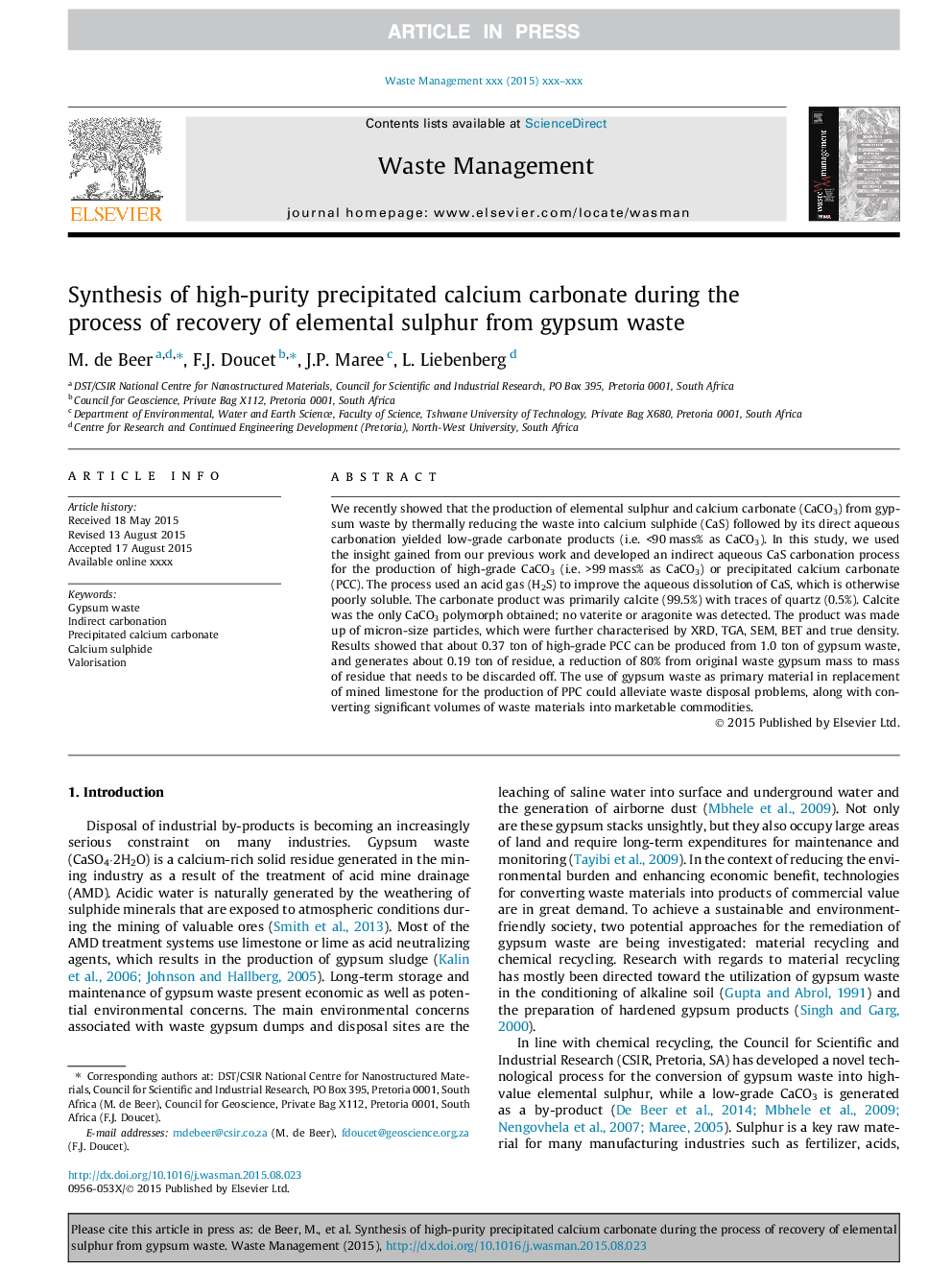| Article ID | Journal | Published Year | Pages | File Type |
|---|---|---|---|---|
| 6354568 | Waste Management | 2015 | 9 Pages |
Abstract
We recently showed that the production of elemental sulphur and calcium carbonate (CaCO3) from gypsum waste by thermally reducing the waste into calcium sulphide (CaS) followed by its direct aqueous carbonation yielded low-grade carbonate products (i.e. <90Â mass% as CaCO3). In this study, we used the insight gained from our previous work and developed an indirect aqueous CaS carbonation process for the production of high-grade CaCO3 (i.e. >99Â mass% as CaCO3) or precipitated calcium carbonate (PCC). The process used an acid gas (H2S) to improve the aqueous dissolution of CaS, which is otherwise poorly soluble. The carbonate product was primarily calcite (99.5%) with traces of quartz (0.5%). Calcite was the only CaCO3 polymorph obtained; no vaterite or aragonite was detected. The product was made up of micron-size particles, which were further characterised by XRD, TGA, SEM, BET and true density. Results showed that about 0.37 ton of high-grade PCC can be produced from 1.0 ton of gypsum waste, and generates about 0.19 ton of residue, a reduction of 80% from original waste gypsum mass to mass of residue that needs to be discarded off. The use of gypsum waste as primary material in replacement of mined limestone for the production of PPC could alleviate waste disposal problems, along with converting significant volumes of waste materials into marketable commodities.
Related Topics
Physical Sciences and Engineering
Earth and Planetary Sciences
Geotechnical Engineering and Engineering Geology
Authors
M. de Beer, F.J. Doucet, J.P. Maree, L. Liebenberg,
